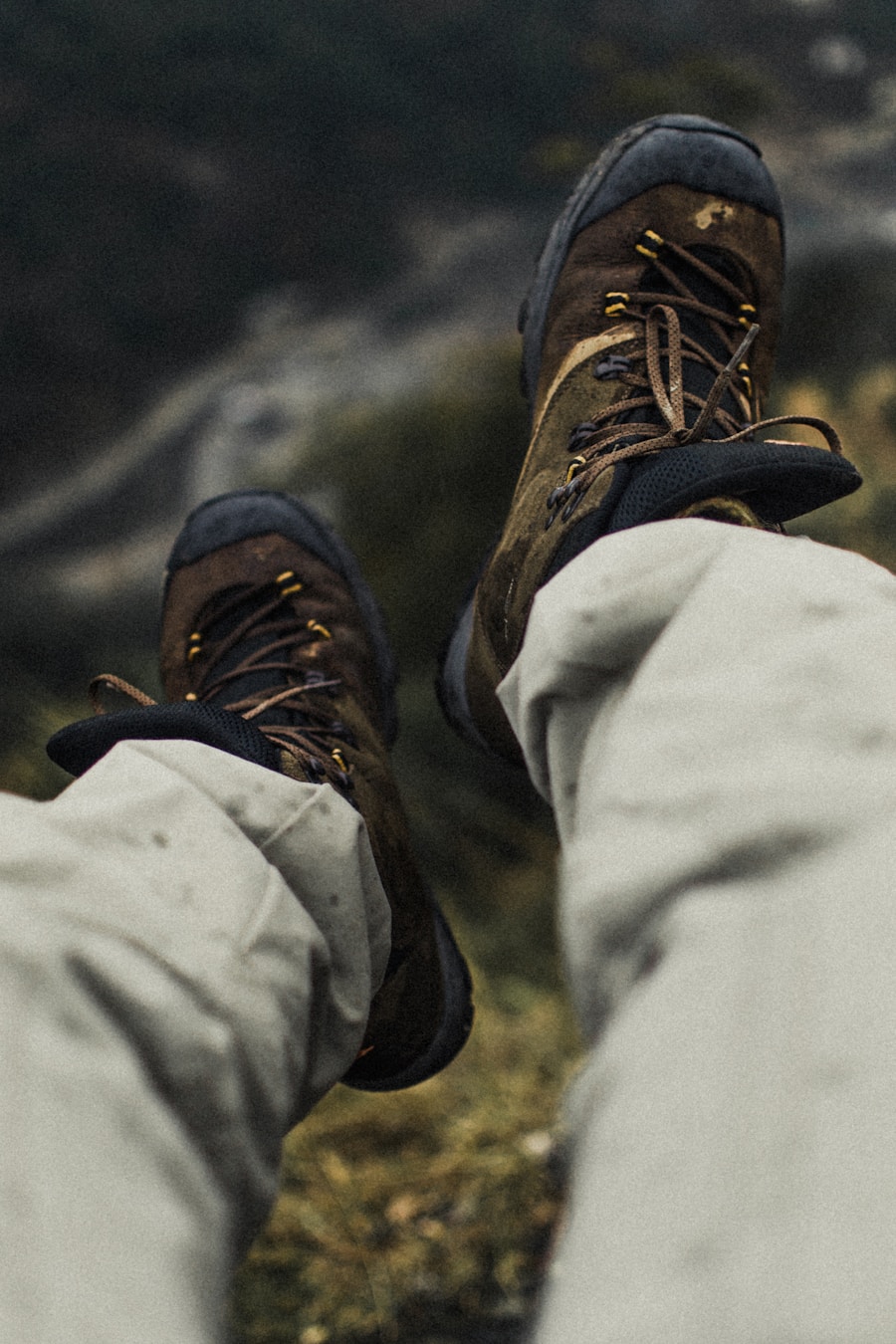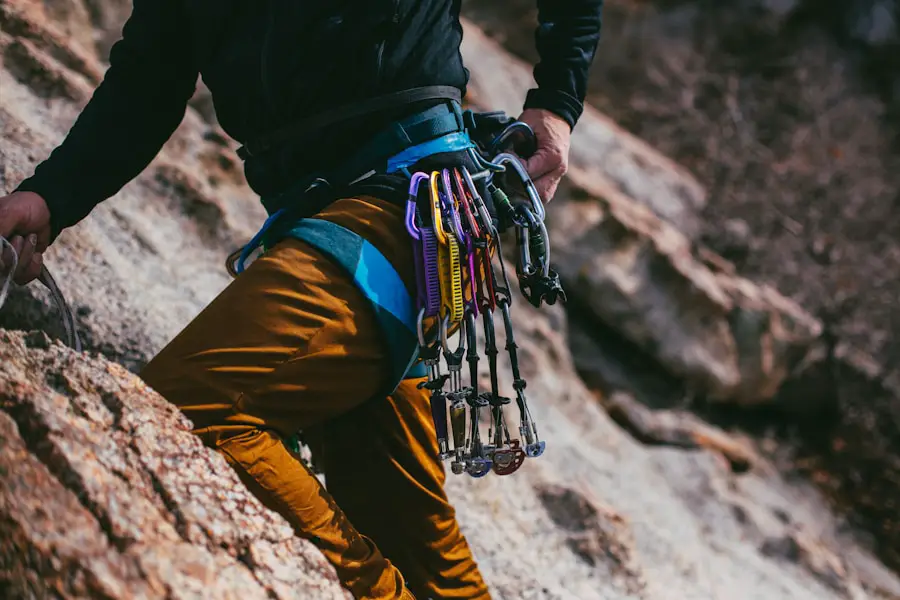Hiking pants come in a variety of styles, each designed to cater to specific needs and preferences of outdoor enthusiasts. The most common types include convertible pants, softshell pants, and hard-shell pants. Convertible pants are particularly popular among hikers who appreciate versatility.
These pants typically feature zip-off legs that can be removed to transform them into shorts, making them ideal for varying temperatures and conditions. This adaptability allows hikers to start their journey in full-length pants and easily convert to shorts as the day warms up, providing comfort without the need to carry an extra pair of clothing. Softshell pants are another excellent option, designed for moderate weather conditions and activities that require a balance of breathability and protection.
Made from stretchy, durable materials, these pants offer a comfortable fit while allowing for a full range of motion. They are often water-resistant, making them suitable for light rain or damp environments. On the other hand, hard-shell pants are built for extreme weather conditions, featuring waterproof and windproof materials that provide maximum protection against the elements.
These pants are typically less breathable than softshell options but are essential for serious hikers who venture into harsh climates or during inclement weather.
Key Takeaways
- Hiking pants come in different types such as convertible, softshell, and hardshell, each with its own unique features and benefits.
- When choosing the right material for your hiking pants, consider factors such as breathability, water resistance, and durability.
- Look for features in hiking pants such as reinforced knees, adjustable waistbands, and multiple pockets for added functionality and comfort.
- Finding the perfect fit for your hiking pants is crucial for comfort and mobility, so consider factors such as inseam length and waist size.
- To maintain and care for your hiking pants, follow the manufacturer’s instructions for washing, drying, and storing to prolong their lifespan and performance.
Choosing the Right Material for Your Hiking Pants
The material of hiking pants plays a crucial role in determining their performance and comfort. Common materials include nylon, polyester, and cotton blends, each with its own set of advantages and disadvantages. Nylon is a popular choice due to its lightweight nature and durability.
It is resistant to abrasions and dries quickly, making it ideal for wet conditions or when crossing streams. Additionally, nylon often has moisture-wicking properties that help keep the wearer dry by drawing sweat away from the skin. Polyester is another widely used fabric in hiking pants, known for its excellent moisture management and quick-drying capabilities.
It is often blended with other materials to enhance stretch and comfort. While polyester is generally less durable than nylon, advancements in fabric technology have led to the development of high-performance polyester blends that can withstand rugged use. Cotton, while comfortable and breathable, is not recommended for hiking due to its tendency to retain moisture, which can lead to chafing and discomfort during long treks.
Therefore, when selecting hiking pants, it is essential to consider the intended use and environmental conditions to choose the most suitable material.
Features to Look for in Hiking Pants

When selecting hiking pants, several features can enhance your overall experience on the trail. One of the most important features is pockets. Look for pants with multiple pockets that provide secure storage for essentials like maps, snacks, or a phone.
Zippered pockets are particularly useful as they keep items secure while you move. Additionally, consider pants with cargo pockets on the thighs for easy access to frequently used items without having to dig through a backpack. Another critical feature is ventilation.
Many hiking pants come equipped with zippered vents or mesh-lined pockets that allow for increased airflow during strenuous activities. This feature is especially beneficial in warmer climates or during intense hikes where overheating can be a concern. Furthermore, adjustable waistbands and cuffs can significantly improve comfort and fit.
A waistband with elastic or adjustable straps allows for a customizable fit, while cuffs that can be tightened help keep debris out of your shoes and prevent snagging on branches or rocks.
Finding the Perfect Fit for Your Hiking Pants
| Brand | Material | Waterproof | Weight |
|---|---|---|---|
| Patagonia | Nylon/Spandex | Yes | 12 oz |
| Arc’teryx | Polyester/Elastane | Yes | 10 oz |
| Columbia | Nylon | No | 14 oz |
Achieving the right fit in hiking pants is essential for comfort and mobility on the trail. When trying on hiking pants, pay attention to the waist size and ensure that they sit comfortably without being too tight or too loose. A good fit should allow for some movement without feeling restrictive; this is particularly important when navigating uneven terrain or climbing over obstacles.
Many brands offer different fits—such as regular, slim, or relaxed—so it’s worth trying on various styles to find what works best for your body type. In addition to waist size, consider the length of the pants as well. Some brands offer options for short, regular, and long lengths to accommodate different heights.
The inseam should ideally fall just above your shoes to prevent dragging while still providing adequate coverage. When testing the fit, perform a few squats or lunges to ensure that the fabric stretches appropriately and does not restrict movement. Remember that hiking often involves a range of motions; therefore, flexibility in the fabric is just as important as the overall fit.
Tips for Maintaining and Caring for Your Hiking Pants
Proper maintenance of hiking pants can significantly extend their lifespan and performance. One of the first steps in caring for your hiking pants is to follow the manufacturer’s washing instructions carefully. Most hiking pants are machine washable; however, using cold water and a gentle cycle can help preserve the fabric’s integrity.
Avoid using fabric softeners as they can coat the fibers and reduce moisture-wicking capabilities. After washing, it’s advisable to air dry your hiking pants rather than using a dryer, which can cause shrinkage or damage to elastic components. If your pants have water-repellent finishes (DWR), periodic reapplication of a DWR treatment after several washes can help maintain their water resistance.
Additionally, inspect your hiking pants regularly for signs of wear and tear, such as frayed seams or small holes. Addressing these issues promptly with repairs or patches can prevent further damage and ensure your gear remains functional during your outdoor adventures.
Hiking Pants for Different Weather Conditions

Weather conditions play a significant role in determining the type of hiking pants you should wear. For hot weather hikes, lightweight and breathable fabrics are essential. Look for pants with moisture-wicking properties that help keep sweat away from your skin while allowing air circulation.
Some models also feature UV protection to shield your skin from harmful sun rays during long days outdoors. In contrast, cold weather hikes require insulation and protection from wind and moisture. Insulated hiking pants or those designed with thermal layers can provide warmth without adding excessive bulk.
Look for options with windproof materials that block cold gusts while still allowing breathability during physical activity. Additionally, consider layering techniques; wearing base layers underneath your hiking pants can provide extra warmth without compromising mobility.
Different outdoor activities may necessitate specialized hiking pants designed to meet specific demands. For instance, backpacking often involves carrying heavy loads over long distances; therefore, durability and comfort are paramount. Look for reinforced knees and seat areas in backpacking pants to withstand wear from sitting on rough terrain or kneeling while setting up camp.
For rock climbing enthusiasts, climbing-specific pants are designed with features that enhance performance on vertical surfaces. These may include articulated knees for better mobility, stretch fabrics that allow for dynamic movements, and reinforced areas that protect against abrasions from climbing gear or rough rock surfaces. Additionally, many climbing pants have a slim fit that reduces bulk while still providing enough room for layering underneath.
Budget-Friendly Options for Hiking Pants
Finding quality hiking pants on a budget is entirely possible with some research and consideration of various brands and sales opportunities. Many outdoor retailers offer budget-friendly options without sacrificing essential features such as durability or comfort. Brands like Columbia and REI Co-op provide affordable yet functional hiking apparel that caters to various outdoor activities.
Another way to save money is by exploring second-hand options or outlet stores where last season’s models may be available at reduced prices. Online marketplaces also offer a plethora of gently used gear at lower costs; however, it’s crucial to check the condition of the items before purchasing. Additionally, consider investing in versatile pieces that can serve multiple purposes—such as convertible pants that function as both shorts and long pants—maximizing your investment while minimizing clutter in your gear collection.
In summary, understanding the different types of hiking pants available is essential for making an informed choice tailored to your specific needs and preferences. By considering factors such as material selection, essential features, fit, maintenance tips, weather conditions, activity-specific requirements, and budget-friendly options, you can find the perfect pair of hiking pants that will enhance your outdoor experience while providing comfort and protection on every adventure.
If you are planning a hiking trip, it is important to choose the right gear, including hiking pants. A good pair of hiking pants can make all the difference in your comfort and performance on the trail. For tips on how to choose the best travel guidebook for your next trip, check out this article. Having the right resources and information can enhance your travel experience and help you make the most of your adventure.
Love travel? Join Our Facebook Community For More Tips.
FAQs
What are hiking pants?
Hiking pants are specially designed pants that are worn during outdoor activities such as hiking, trekking, and camping. They are designed to provide comfort, protection, and functionality for the wearer during these activities.
What are the features of hiking pants?
Hiking pants typically have features such as moisture-wicking fabric, quick-drying properties, UV protection, reinforced knees and seat, multiple pockets for storage, and adjustable waistbands. Some hiking pants also have convertible options, allowing them to be worn as shorts.
What are the benefits of wearing hiking pants?
Wearing hiking pants provides several benefits such as protection from the elements, durability for rugged terrain, comfort during long hikes, and functionality with multiple pockets for storing essentials.
What should I look for when choosing hiking pants?
When choosing hiking pants, it is important to consider factors such as the type of fabric, fit, durability, weather resistance, and additional features such as UPF protection and insect repellent properties. It is also important to consider the specific needs of the activity and climate in which the pants will be worn.
Can hiking pants be used for other activities?
While hiking pants are designed for outdoor activities, they can also be used for other activities such as camping, trekking, backpacking, and even everyday wear. Their durability, comfort, and functionality make them versatile for various activities.
